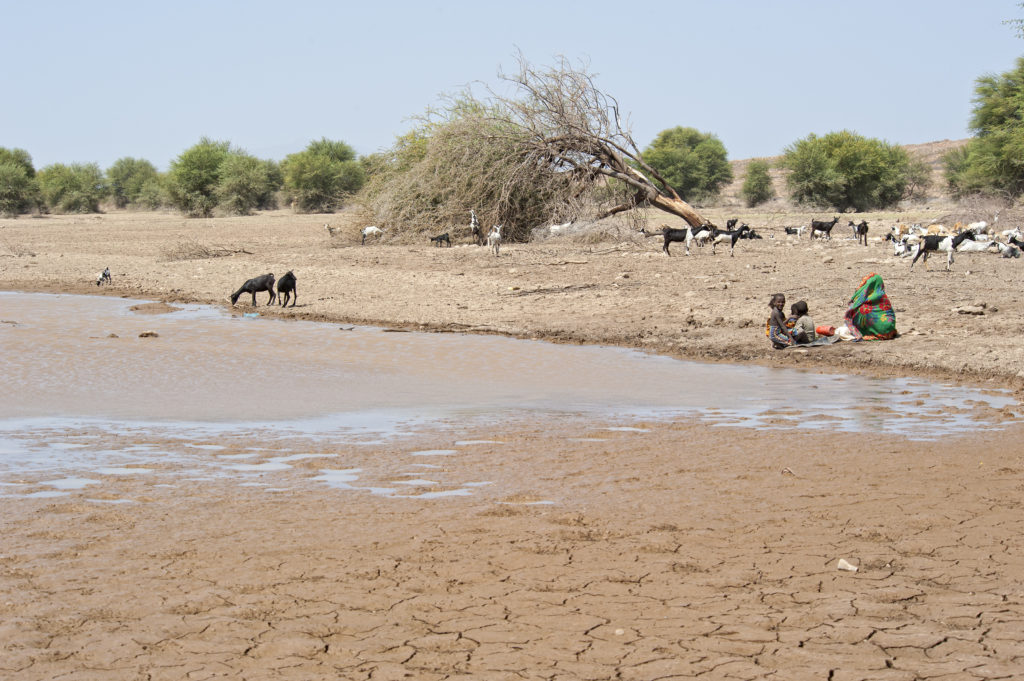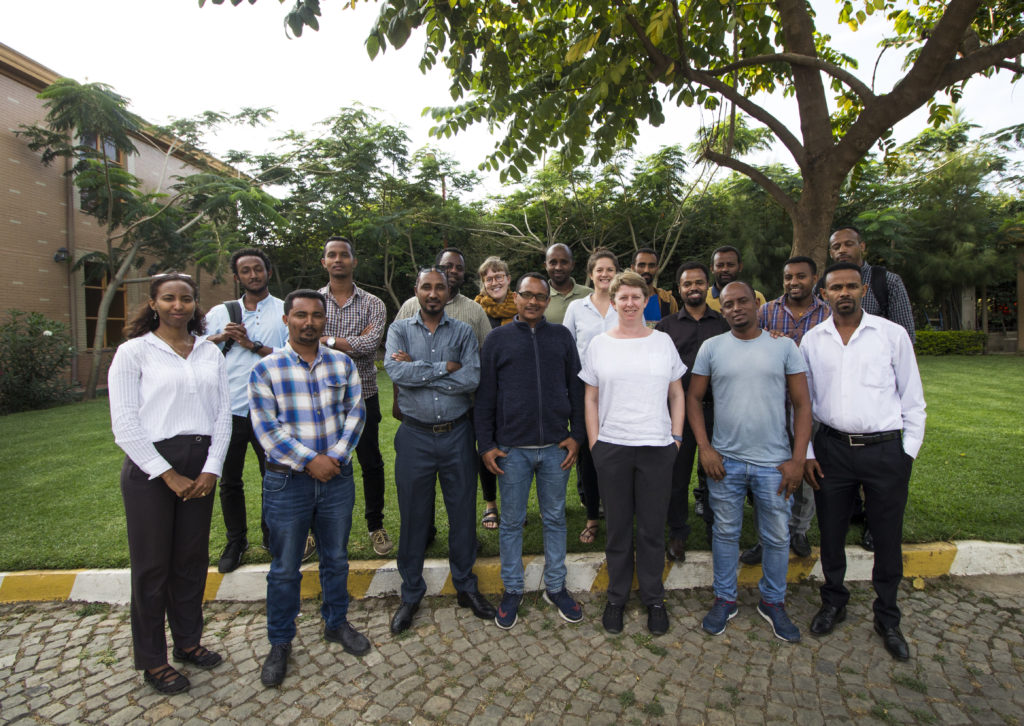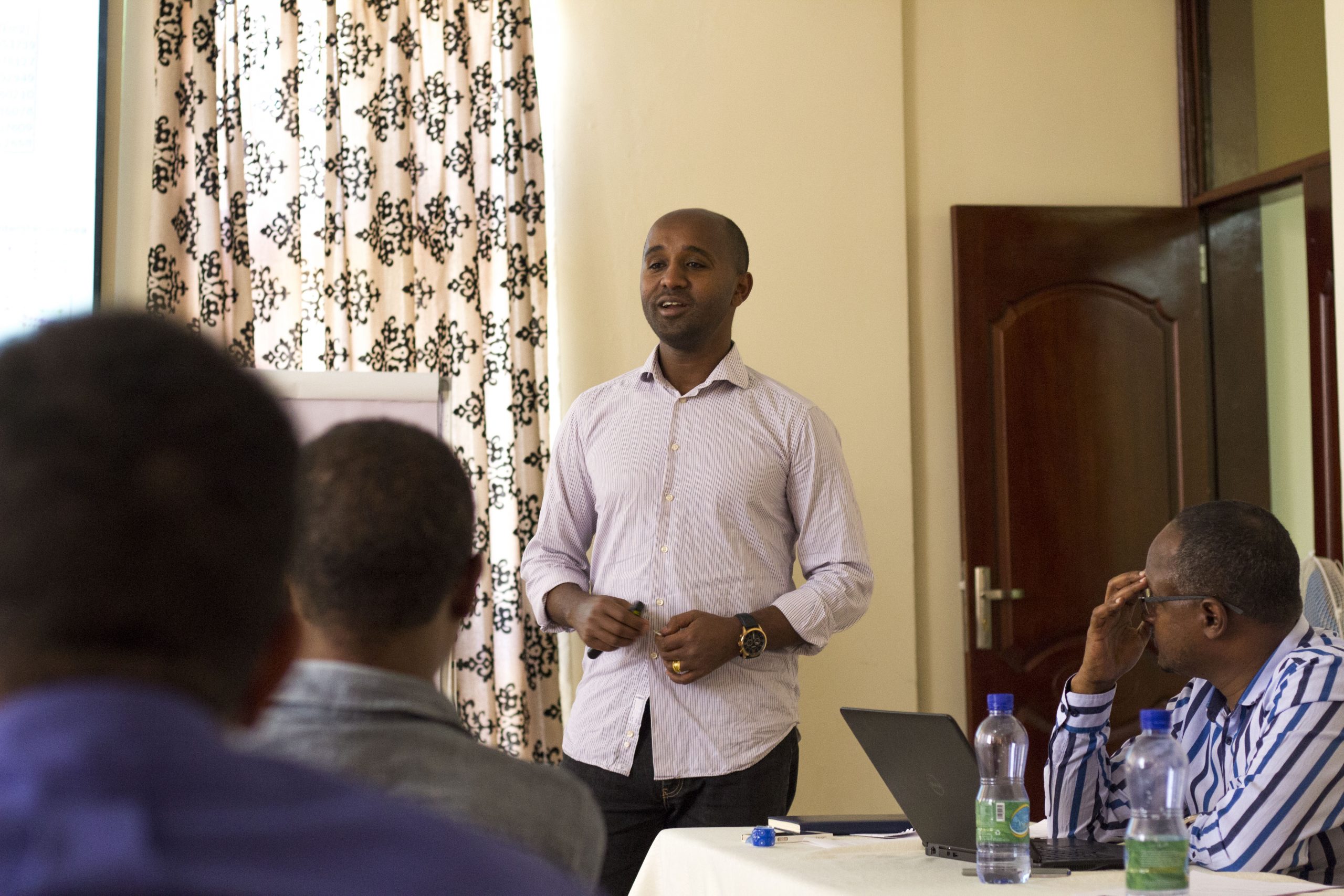Dr. Feyera Hirpa, University of Oxford
Tell us about your background, your research and how it relates to REACH.
I am a Postdoctoral Researcher in African Hydrology and Climate at the University of Oxford. I am interested in understanding the drivers of water-related risks and in developing modelling tools for reducing these risks. In recent years, I have been developing models for global-scale flood forecasting and tools for managing water resources in East Africa.
My research aims to improve water resources management and allocation in the Awash river basin, Ethiopia – a basin characterised by highly variable water availability in space and time. In collaboration with REACH colleagues and the Awash basin Authority, I am developing a water resources allocation tool to help water resources managers regularly assess water availability and demand across the basin, as well as fairly allocate the resource between multiple users. This work is supporting fair allocation by properly accounting for priorities and tradeoffs between human, environmental and economic needs.
One in five Ethiopian lives in the Awash basin and nearly 30% of the national GDP is generated from activities taking place within the basin. Large urban centers, rural communities, nomadic pastoralists, irrigated agriculture, and industrial hubs all compete for the highly-variable water resources. During the dry season (November-June), and especially during extreme drought years (e.g. 2015), pastoralists and poor communities located in the downstream, arid part of the basin, don’t get access to sufficient water for domestic and livestock consumption.

Improving water resources management, in particular through designing allocation decisions that reflect these dynamics, can thus help ensure the basin’s multiple users, including poor communities, economic sectors (agriculture, energy and industry) and the environment have an equitable access to water.
The tool I am developing, consists of hydrological and water allocation models driven by climate data (historical and future) and considers land use and demographic changes.
Why is your research relevant and important in the Ethiopian context?
In Ethiopia, people’s livelihood and the economy are highly dependent on rainfall and water availability: almost all food crops and most industrial crops (that contribute to 85% export earnings) are produced by rain-fed agriculture; hydro-electric power contributes to 94% of the country’s electricity production. This also means that water scarcity and droughts can have severe impacts on Ethiopia’s economy as well as on food and energy productions.
Ethiopia’s population is among the fastest growing (2.8%) in the world. The country’s economy, one of the fastest developing in Africa, is also growing as the result of the government’s plan to enhance the productivity of the agricultural and manufacturing sectors. As a result, the demand for water is growing rapidly, posing a challenge for water access and use, especially in the context of water scarcity and that of a changing climate. The existing water management practices, such as water resources assessment, as well as permitting and allocations, are not climate resilient and are unsustainable. The need for an efficient water allocation and planning for a reduced water availability is more pressing.
Our work in the Awash basin can inform national scale efforts to improve the resilience of water resources systems to drought. Understanding how water availability changes with a warming climate helps to plan for sustainable water futures in the country.
What have been some of the early findings for your research?
Firstly, there is a high level of inequality in water access and use between the upstream and downstream parts of the Awash basin. Rainfall and surface water are scarce downstream and relatively abundant in the highlands (see figure below). Sectorial water use also varies across the basin: livestock herders are predominantly located in the arid lowlands while food crop farms and industrial parks are mainly in the highlands.

Secondly, while surface water is the main source for water supply in the Awash basin, it is not sufficient to satisfy the current water demand. The gap between demand and supply is also widening as the demand is growing but surface water availability is decreasing due to climate change. Development of additional water sources (i.e. groundwater) is critical to supplement the surface water supply.
Thirdly, managing tradeoffs between irrigation (the largest water consumer), industrial, livestock, and domestic demand is critical for improving water access for poor communities in the arid downstream part of the basin. The figure below illustrates that capping irrigation water use and adding groundwater supply sources improve water supply for the arid woredas.[1]

How do you think it can have an impact and help improve water security for the poor?
The poor heavily depend on rain-fed agriculture and livestock for their livelihood, and are thus vulnerable to drought and water scarcity. Sustainable water resources management through improved basin-scale water accounting and better-designed allocation schemes, combined with measures to improve access, can thus help support poverty reduction in the basin. Our preliminary findings show that water availability for poor communities can be improved by implementing water use regulations (e.g. capping large-scale irrigation water abstraction).
Of course, managing tradeoffs involves policy makers and several stakeholders, and requires effective management strategies, political will and investments. Our ongoing work, in partnership with the basin authority, the Ministry of Water, Irrigation and Electricity and the Water and Land Resource Center, aims to find sustainable water management practices that can improve water security for all people in the basin, including the vulnerable and poor.

Further reading:
- REACH’s work in the Awash basin , Sustaining growth through water security observatory;
- Taye, M. T., Dyer, E., Hirpa, F. A., and Charles, K. (2018). Climate change impact on water resources in the Awash Basin, Ethiopia. Water MDPI: 10, 1560.
[1] The second smallest administrative unit in Ethiopia; equivalent to a district.

